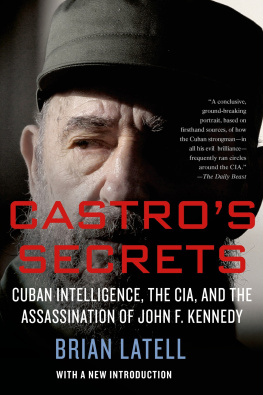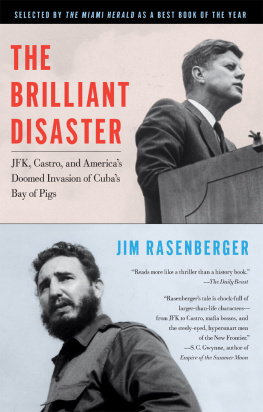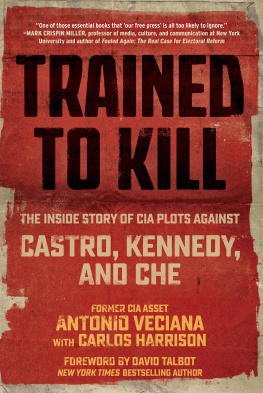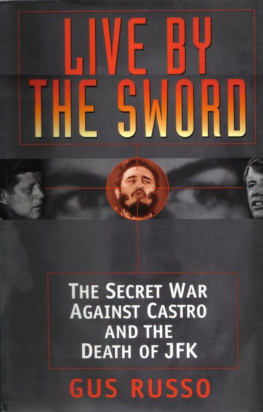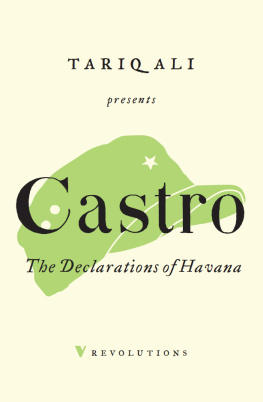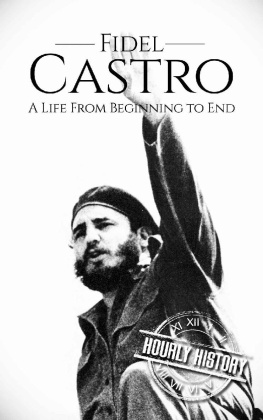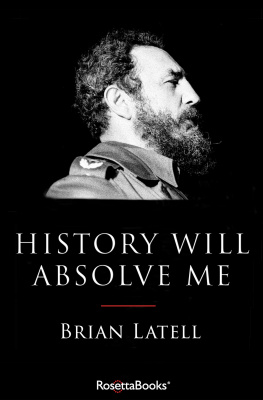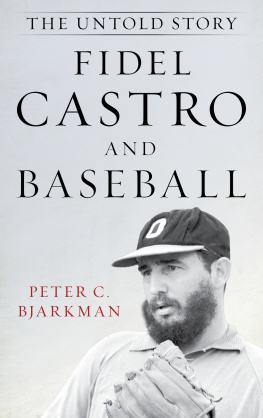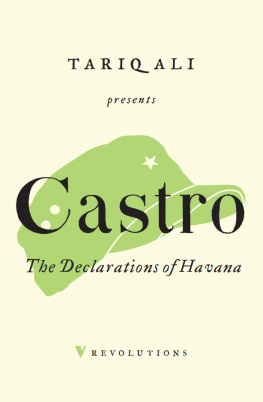CASTROS
SECRETS
CUBAN INTELLIGENCE,
THE CIA, AND THE ASSASSINATION
OF JOHN F. KENNEDY
BRIAN LATELL

The author and publisher have provided this e-book to you for your personal use only. You may not make this e-book publicly available in any way. Copyright infringement is against the law. If you believe the copy of this e-book you are reading infringes on the authors copyright, please notify the publisher at: us.macmillanusa.com/piracy.
All statements of fact, opinion, or analysis expressed are those of the author and do not reflect the official positions or views the CIA or any other US Government agency. Nothing in the contents should be construed as asserting or implying US Government authentication of information or Agency endorsement of the authors views. The material has been reviewed by the CIA to prevent the disclosure of classified information.
CASTROS SECRETS
Copyright Brian Latell, 2012.
All rights reserved.
For information, address St. Martins Press, 175 Fifth Avenue, New York, N.Y. 10010.
First published in hardcover in 2012 by PALGRAVE MACMILLAN in the US a division of St. Martins Press LLC, 175 Fifth Avenue, New York, NY 10010.
ISBN: 978-1-137-27841-8
Our eBooks may be purchased in bulk for promotional, educational, or business use. Please contact the Macmillan Corporate and Premium Sales Department at 1-800-221-7945, ext. 5442, or by e-mail at .
The Library of Congress has catalogued the hardcover edition as follows:
Latell, Brian.
Castros secrets : the CIA and Cubas intelligence machine / Brian Latell.
p. cm.
Includes index.
ISBN 978-0-230-62123-7 (hardback)
1. Intelligence serviceCubaHistory20th century. 2. United States. Central Intelligence AgencyCuba. 3. Castro, Fidel, 1926 I. Title.
JL1009.5.I6L37 2012
327.12730729109046dc23
2011042920
A catalogue record of the book is available from the British Library.
Design by Letra Libre, Inc.
First PALGRAVE MACMILLAN paperback edition: July 2013
10 9 8 7 6 5 4 3 2 1
Printed in the United States of America.
This book is also for Jill
and
for our sons
Jerome Simon Jerry Latell
and
John Wray Latell
AUTHORS NOTE
MORE THAN A DOZEN DEFECTORS FROM CUBAS ELITE INTELLI gence and security services speak in these pages. They worked during different eras for the Castro brothers, with bare-knuckled dedication, dueling with the CIA from the dawn of the Cuban revolution through the late 1990s, until each made the dangerous decision to flee into the welcoming arms of American officials. A few of these brave men must live obscurely with new identities assigned by federal authorities because they are under Cuban government death sentences.
Florentino Aspillaga Lombard, the most knowledgeable Cuban defector ever to change sides, appears here with his true name, although he has lived with a new one since 1987, surviving two assassination attempts by Cuban operatives. Aspillaga agreed to share his personal saga with me during about fifteen hours of recorded interviews. He also gave me a copy of a revealing personal and professional memoir written soon after he arrived in the United States. Until now scarcely any of his memories have appeared on the public record. He has asked nothing of me in return for his remarkable story, has put no limits on how I tell it, and has no stake in the publication of this book.
I have also interviewed other ranking defectors from the Castro brothers intelligence and counterintelligence agencies and their personal security and commando squads. Some of these men speak in true name, others I have had to disguise for their protection. (When names are changed, readers are told.) All of the defectors knew that my purpose in meeting with them was to write this book unveiling the mysteries and crimes of Cuban intelligence over the last half century. They too asked nothing of me other than a cafecito now and then, and that I retell their stories accurately.
All of them knew of my own three-and-a-half decades of foreign intelligence work for the CIA and the National Intelligence Council. Most had read my earlier book, After Fidel, and were comfortable conferring with me, most of them on numerous occasions. I had never met any of them during my years in government, although I was familiar with much of their reporting and experiences. In almost every instance, I knew, for example, how highly they were regarded by American intelligence authorities, and how thoroughly their bona fides had been verified.
Nevertheless, in our meetings I applied most of the same debriefing rigors that are standard for intelligence and law enforcement officers. In some instances I was able to confirm what one defector told me by asking another who had not worked closely with him in Cuba. My knowledge as an historian of the Castro brothers and their revolutionas a CIA Cuba desk analyst, National Intelligence Officer for Latin America in the early 1990s, and a university lecturer for 30 years in Washington and Miamipermitted me to pose questions to them with authority. When recounting an especially interesting story in response to a question, one defector told me, No one ever asked me that before.
Their recollections have also been checked against the memories of many former CIA officers I interviewed. Nearly all of them have requested anonymity, but they spoke to me candidly and in numerous meetings, phone conversations, and correspondence. I also had the good fortune to know many of the now-deceased senior CIA officials whose curious and controversial roles in the Cuba wars of the early 1960s are described here. I interviewed several of them before their deaths.
My research inevitably led me to the hundreds of thousands of pages of declassified CIA documents stored at the National Archives. There is no other trove of American intelligence history as brutally revealing of once highly sensitive operational secrets as these records related to the assassination of John F. Kennedy. Legislation passed by Congress, and signed into law by President Bill Clinton in 1992, created the Assassination Records Review Board. The members had the authority to require the declassification of all U.S. government documents considered relevant to the assassination in Dallas. In my last position at CIA, when I served as Director of the Center for the Study of Intelligence from 1994 to 1998, officers of the Centers Historical Review Groupmostly Agency retirees working on contractwere responsible for declassifying the CIA documents. The CIA History Staff was also part of the Center I managed.
Since my own retirement I have read thousands of those historical records headquarters assessments by analysts and operatives, field cables, debriefing and polygraph reports, assessments of spies working for CIA, and revealing Agency historiesmany of which were released to the Archives with the greatest reluctance and concern. Readers will learn for the first time the identities of secret CIA agents, successful deception operations run against Fidel Castro and his intelligence chieftains, the inner workings of Cuban intelligence, and previously unknown details of the Kennedy-era CIA assassination plotting against Castro.
It was an extraordinary revelation by Aspillaga during my first meeting with him that led me down the circuitous path this narrative pursues. He told me of the order he received early on the morning President Kennedy was shot that strongly suggests prior Cuban government knowledge of what Lee Harvey Oswald would do. Skeptical at first, my research over the last few years led me to declassified reporting from two other reliable American intelligence community sourcesboth deceasedwhose stories about Oswald and Cuban intelligence officers lend significant weight to what Aspillaga told me.

